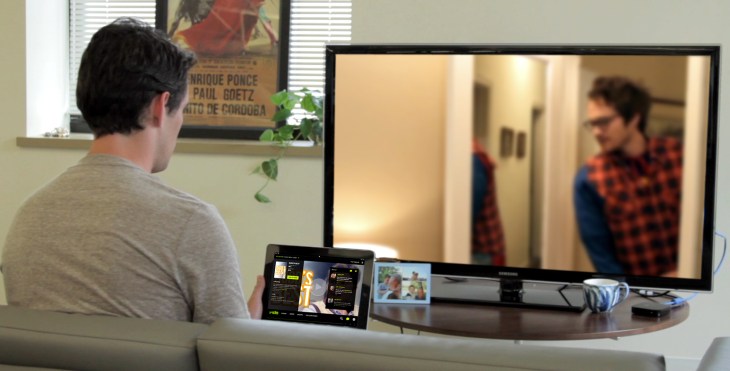Back in June, Brightcove unveiled a new strategy to take its App Cloud development platform open source, and at the same time it introduced a new dual-screen Apple TV feature aimed at growing its business on connected TVs. Today, Brightcove is announcing the very first implementation of that, with Discovery Networks International, which will be using it first in Italy. Jeremy Allaire, the CEO of Brightcove, tells TechCrunch that this is a global deal with Discovery, meaning that if all goes well, Discovery could take the features to other markets where it operates in Europe, the U.S. and the rest of the world.
The new service will run on iPad and iPhone apps from DMAX Italy, a free-to-air channel operated by Discovery with 20 million subscribers. And it will give users the ability to initiate an action on, say, an iPhone or iPad, and then shift that content directly onto the larger screen of the TV using Apple’s AirPlay technology. This makes dual-screen functionality a step beyond companion apps — now very common in the TV world — in that it gives users the ability to actually port features and functions from one screen directly to the other.
Discovery appears to be seeing Italy as the fist step in a wider rollout: “Discovery Networks International is pleased to build upon our long-standing commitment to innovation in programming and technology by providing our dedicated viewing audience with richer, more contextual opportunities to interact with our content,” said David Schafer, vice president, International Digital Media at Discovery Communications, in a statement. “We are delighted to be working with Brightcove on our first app with DMAX Italy and in the future as we roll out into additional markets.”
And if this goes global, that’s a significant step for Brightcove: Discovery’s TV and online properties collectively have 1.8 billion cumulative subscribers across 209 countries, including 149 worldwide television networks, with flagship channels like Discovery Channel, TLC, Animal Planet, Science and Investigation Discovery. Other holdings include stakes in OWN: Oprah Winfrey Network, The Hub and 3net, the first 24-hour 3D network.
Allaire also notes that Discovery is the first but there are other users in the pipeline yet to be announced and launched. “We expect to see other compelling examples launching both among out installed base of media companies as well as others,” he tells TechCrunch. “This is resonating because app makers want to get to the TV to help differentiate themselves.”
Allaire points out that while Discovery — and likely other media companies — may be the first to adopt dual-screen technology for video playback services, but it has several other applications. Corporate users, which actually make up the majority of Discovery’s customers, can use the technology for presentations.
And apps developers — a segment that Brightcove is increasingly targeting through its July acquisition of Zencoder — can use it to expand the functionality of their apps. You can see this being particularly resonant, for example, with games developers that have up to now created mainly for mobile screens.
This also offers an interesting development for mobile advertising, too — since one of the big issues up to now especially on mobiles has been the double challenge of screen size and users feeling that an ad taking up that precious real estate is intrusive. Now this presents one way of making that service suddenly feel more dynamic, on a platform that ad buyers know and invest in regularly.
The Brightcove news puts a big emphasis on Apple and iOS — you need Apple TV and iOS devices for the dual-screen feature. It’s not that Brightcove is an Apple shop — in fact today Discovery is also releasing an Android video app with Brightcove’s App Cloud APIs incorporated into it. But Allaire notes that so far, it’s only been Apple that has created a framework for dual screen services on its platform.
“The dual screen TV apps only work with Apple TV because Apple is the only company in the market to have created a platform to do this,” he says. “Google, Microsoft, Samsung… none of them have created anything similar.”
However, Google has actually done some work looking into how much dual-screens are being used today, so it’s likely only a matter of time before it too comes out with a similar offering as Apple’s.
Allaire agrees. “Presumably it’s likely that Google and Microsoft will look to introduce similar plumbing and APIs into their mobile and TV platforms, and if those get embedded and get broad distribution, then we will look to do integrate them into our dual-app service, too,” he says.
Meanwhile, Allaire defends the suggestion that this means the service is niche today. “In the last quarter Apple actually outsold the Xbox with its Apple TV,” he noted. “It’s gaining marketshare pretty quickly, and I think it’s a safe bet to take advantage of that.” The service has been built, he says, so that if a consumer has the app and and Apple TV and a compatible set, the functionality begins automatically.
For now, incorporating dual-screen apps into App Cloud comes at no cost to the developer. App Cloud itself starts free, too, although there are managed, professional services around storage and other features that are sold on a usage basis.
